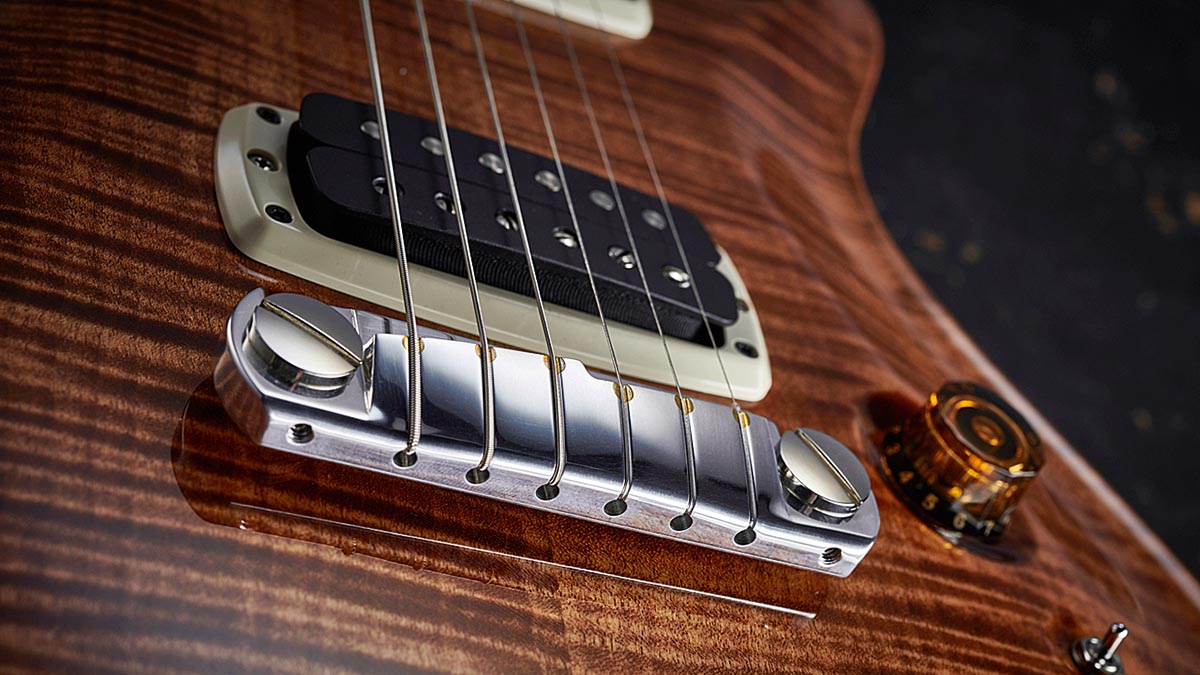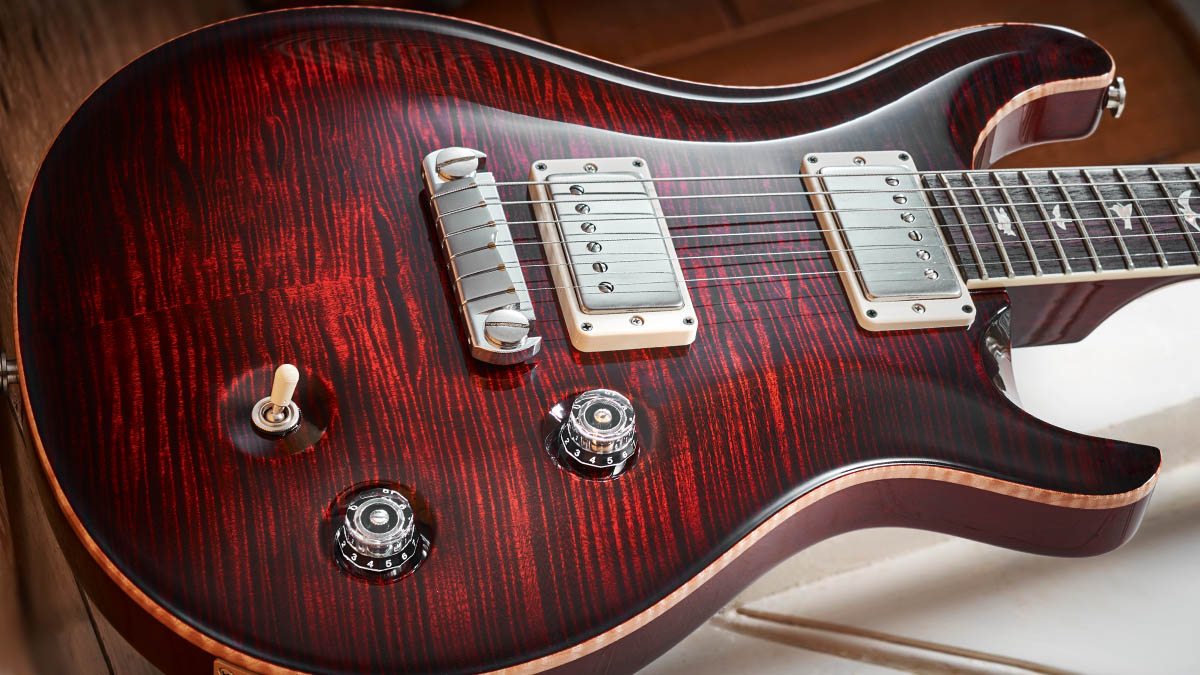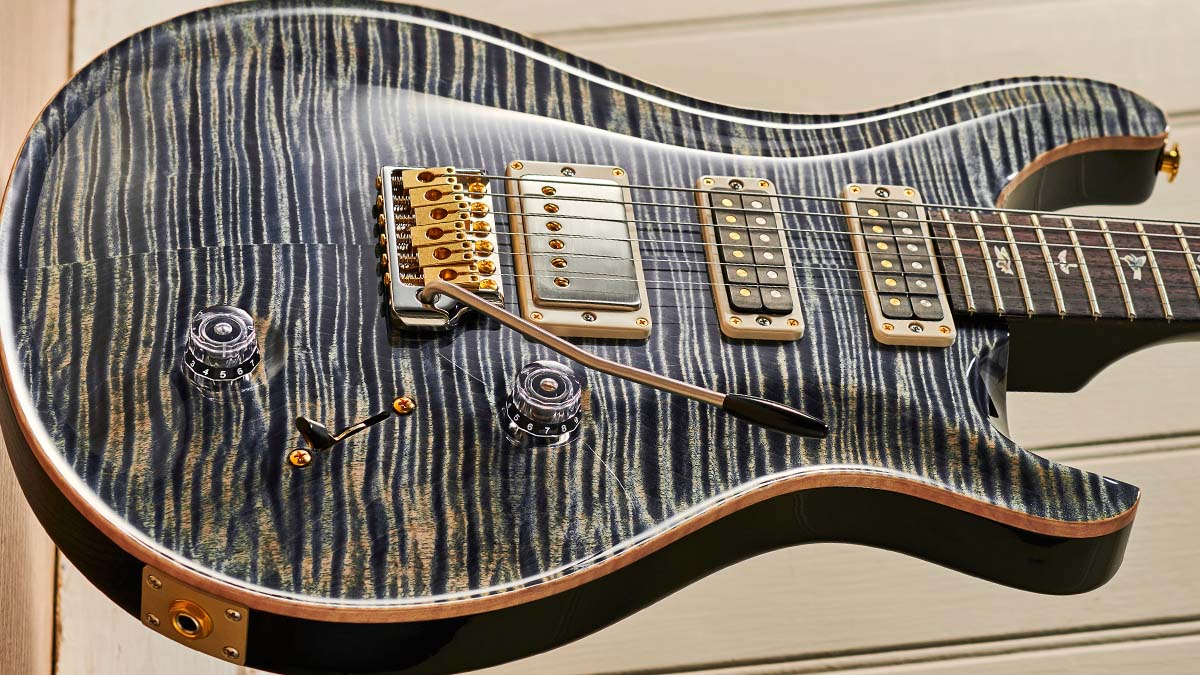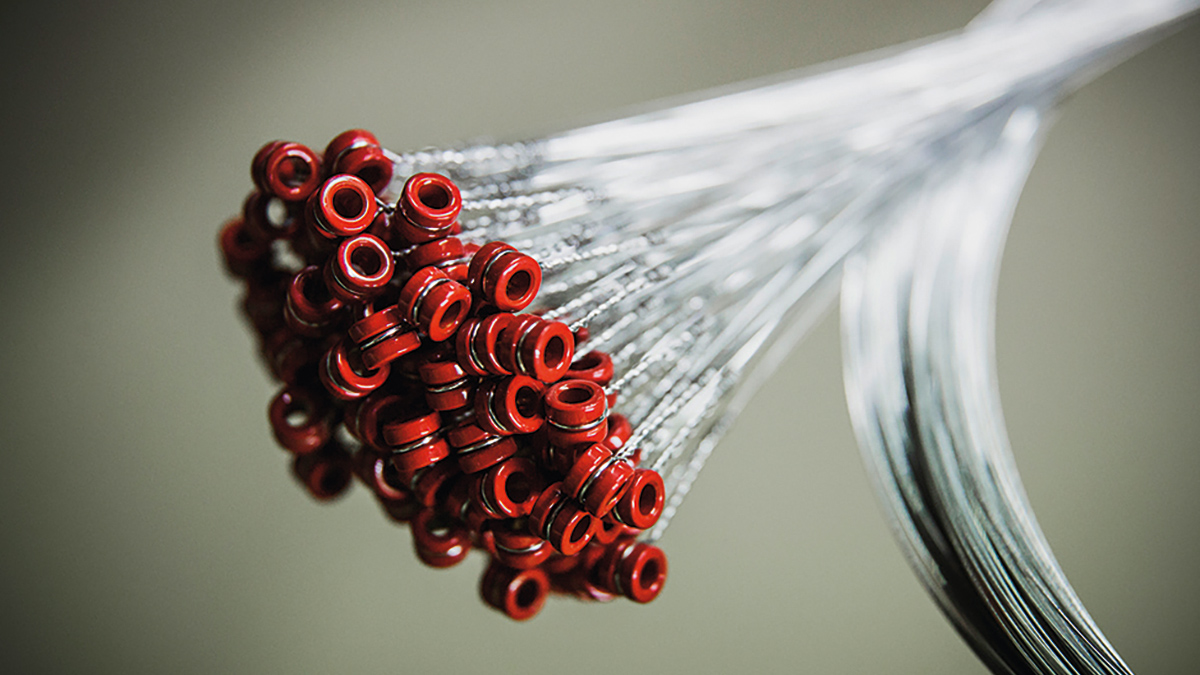Why hardware is the key to great guitar tone
Handwound pickups and exotic woods may be sexier, but your guitar’s metal hardware is the secret, says Paul Reed Smith

There are plenty of modders out there who wax lyrical about pickups and paper-in-oil caps, but far fewer people look to the guitar’s metal hardware for improvements in tone. And while a bridge or a replacement set of saddles may not be as charismatic as handwound humbuckers, you’d be foolish to overlook their impact on your guitar’s sound.
Few guitar makers have examined the effect of individual components on an instrument’s performance as extensively as Paul Reed Smith. That’s why I decided to ask him what kind of difference the right hardware can make to your guitar’s overall tone. Why, for example, does PRS bother to design its own bridges and tuners, among other things? Surely it would be easier to buy in parts from established hardware suppliers?
“I would just use [outsourced] parts if they did what we wanted them to do,” Paul reflects. “I mean, we buy Switchcraft jacks. We don’t make our own jacks, we don’t make our own pots. There’s plenty of things that we don’t make… we don’t make our own screws, for example. So there’s piles of stuff that works fine.”

The reason that some mission-critical hardware is designed and built in-house, he explains, is to give PRS instruments an edge in the most demanding professional scenarios. That extra edge might be subtle, but if the difference is tangible to the musician and improves their connection with the instrument, it’s worth pursuing, Paul argues. And, for him at least, that means going beyond off-the-peg solutions.
“We’re not trying to be hardware-arrogant, we’re just trying to be hardware-smart – and get the guitars to sound right,” he says. “For example, our one-piece straight bridge with the brass inserts evolved after experimenting for years and years and years – and we like the way they sound. So it’s not that we wouldn’t buy parts from anyone else, it’s just that they’re not providing us what we need for our guitars.”
Bumper info
This search for incremental improvements involves questioning the rules of hardware design. For example, it’s common for hardware makers to chrome- or nickel-plate bridges to protect the aluminum beneath. But one day Paul found himself wondering if plating might be unnecessary, or even detrimental to tone.
“There’s a lot to a bridge design,” Paul says, “a lot. We didn’t know whether we could get away without plating an [aluminum] bridge until we looked under an MG – a British car – and it had an aluminum bumper, but the only place it was corroded was inside the bumper where the snow and the salt got it, which means it could survive on a guitar no problem.
All the latest guitar news, interviews, lessons, reviews, deals and more, direct to your inbox!
“After that, we said, ‘Oh, we can do that.’ Plating is used as a way of protecting the metal – but it peels off like metal Scotch tape. You really want the sound of your guitar to go through metal Scotch tape? I mean, when you ask the question that way, the answer is easy,” he says.
And when it comes to the contribution different saddle materials make to the tone of a guitar, he’s even more direct: “Steel sounds really good. Brass sounds really good. Aluminum wears out and nylon sounds like shit,” Paul concludes.
While it’s clear that individual hardware components each have a contribution to make, especially in places where they transfer string-vibration into the body of the guitar, I have to ask what the ultimate goal of optimising hardware is? What does an empirically ‘better’ guitar behave like?
“The best way to test the guitar is with a stopwatch,” Paul says. “A guitar that rings for 12 seconds is not as good as a guitar that rings for 45 seconds. So that stopwatch is going to tell you how much deadening there is. If the same set of strings is fitted to two guitars but one rings for 45 seconds instead of 12, then the 45-second guitar is absolutely a better instrument.”

Paul also argues that bad hardware has a subtractive effect. Each note, if you will, starts life fully formed with the vibration of the string – a vibration that is either translated faithfully into sound by the guitar, or which loses energy and information along the way.
“The string is trying to make bass, middle and treble – and strings are very good these days. So if you have a guitar that’s really bassy, something ate the midrange and the treble. If the guitar is really trebly, it’s because something ate the midrange and the bass.”
Therefore, if you want the best-possible sounding guitar, Paul says, you need to devote attention to all the components that could potentially rob frequencies and sustain from the guitar.

The sum of its parts
“It’s a very complicated but beautiful equation,” he reflects, “and my problem with the guitar industry is that they try to make it about one thing or another. What’s the most important thing? Well, it’s the bridge, but the tuning pegs do make a difference.
“Take the tuning pegs of a $325,000 [vintage] Les Paul. If you put Grovers on it, now it’s worth $250,000, so that repair cost you minus $75,000. If you then fill the holes in and put the old pegs back on, the guitar’s now worth $300,000 instead of $250,000. So you just made $50,000 back.
“Why is that one thing making such a huge swing in the price of the guitar? Because it makes a difference in the sound. By comparison, when you put a five-way switch on a ’57 Strat, the price does not change one bit. People know that switch makes no difference to the sound of the guitar. But on the Les Paul, everybody knows those tuning pegs make a difference in the tone. And that’s just the tuning pegs.
“So every single thing has gotta be right,” he continues. “I’ll give you another example: of all the weird things, if you put a plastic tube around the truss rod to keep it from rattling it just deadens the whole neck, right? So it’s never one thing, it’s every single part. You’ve got to get it all right. You’re only as good as your weakest link.”

For a man so committed to innovation, Paul’s craft is underpinned by a deep admiration for the originators of the classic electric guitars of the '50s and '60s.
When I ask him what he feels – with the benefit of hindsight – Fender and Gibson got right in terms of hardware (and what they got wrong) back in the day, his answer is measured: “You’re asking me to analyse somebody else’s art. I’ll do it because it’s history, but you’ve got to be careful. I would say all of it was right because it was the beginning of our industry and they were trying to do something new at the time… So, to me, there’s nothing wrong with any of it because it started our industry and it changed the way people approached guitar playing.
“These people were in a tent pushing against the walls and stretching it out, making it bigger and turning it into a house. But there was nothing wrong with anything they did. It was all a beginning.”

Given that Paul has been on a 30-year mission to continually evolve the hardware fitted to PRS guitars, does he think that he will ever reach a point where things can’t be improved any further?
“Yes. The answer to that question is yes,” Paul says, emphatically. “Guitar makers experiment their whole careers, but, at some point, they stop and then start doing the same thing over and over again. I’m settling down to two or three bridges that we really like, and settling down to two or three neck shapes we really like.
“The only times we change the neck shapes now are pretty much for artists. Pickups are getting better fast. We are working hard on that. The thing I like about the guitar industry is that you have to empty your cup over and over again and just decide you didn’t know shit – and figure out, ‘Well, wow, I didn’t know that…’
Guitars are pretty simple devices… and you’d think it’d be easy to get right. But it’s not – it’s really hard
Paul Reed Smith
“But I got an email from an artist yesterday and he was sooo happy. I’m not going to tell you who it was, but they said, ‘Paul, this guitar is feeling and sounding so good… I was holding lead notes like Clapton in 1990. Can’t thank you enough – sustained notes howl and swirl and chirp and it’s awesome. I now have a true Number One guitar for my thing.’ So now he’s got that guitar slung around his neck – and he owns probably around 250 guitars, by the way.
“Guitars are pretty simple devices. You got a wood neck and wood fingerboard and a bunch of frets, a truss rod and some tuning pegs and a body and finish and bridge and pickups… and you’d think it’d be easy to get right. But it’s not – it’s really hard to get right.”
Jamie Dickson is Editor-in-Chief of Guitarist magazine, Britain's best-selling and longest-running monthly for guitar players. He started his career at the Daily Telegraph in London, where his first assignment was interviewing blue-eyed soul legend Robert Palmer, going on to become a full-time author on music, writing for benchmark references such as 1001 Albums You Must Hear Before You Die and Dorling Kindersley's How To Play Guitar Step By Step. He joined Guitarist in 2011 and since then it has been his privilege to interview everyone from B.B. King to St. Vincent for Guitarist's readers, while sharing insights into scores of historic guitars, from Rory Gallagher's '61 Strat to the first Martin D-28 ever made.

